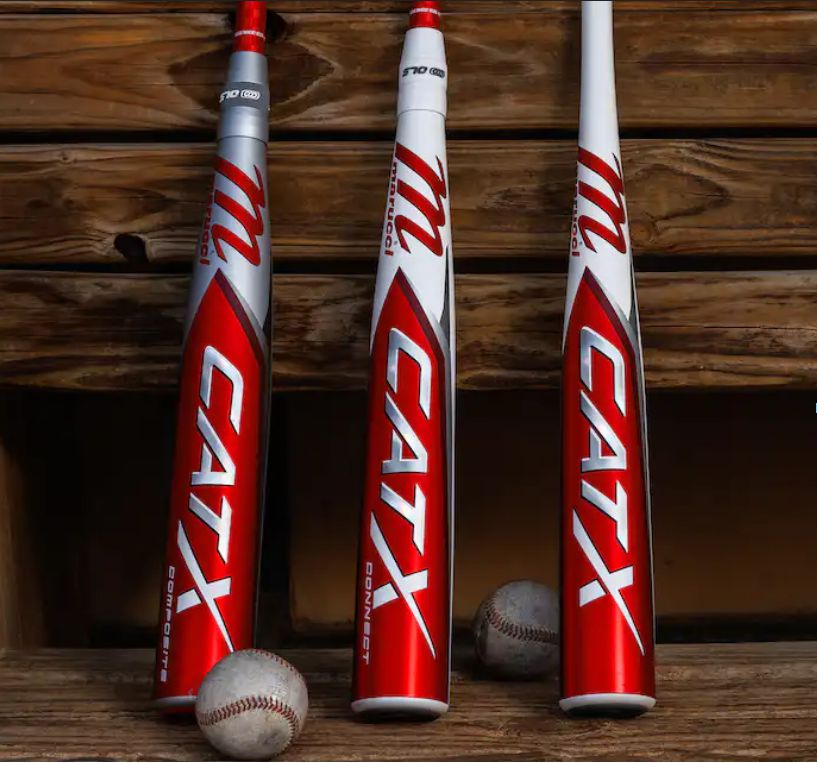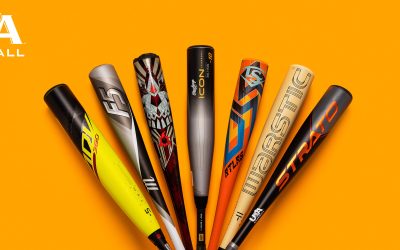When it comes to choosing the perfect baseball or softball bat, players are often faced with a critical decision: a one-piece or composite bat? Both types of bats have their own unique characteristics and advantages, making it essential to understand the key factors when making this decision. In this article, we will explore the performance differences, factors influencing bat speed and power, durability and longevity, impact on bat vibration and sting, weight distribution and swing feel, as well as the cost and value comparison between one-piece and composite bats. By examining these factors, we aim to provide insights and recommendations that will help players make an informed decision and find the bat that best suits their needs and preferences.
Introduction to One-Piece and Composite Bats
What is a One-Piece Bat?
A one-piece bat is exactly what it sounds like: a bat made from a single piece of material, typically aluminum or alloy. These bats tend to offer a stiffer feel and are known for their durability. One of the most popular one-piece bats is the Demarini Voodoo One, you can find our in depth review on that bat here.
What is a Composite Bat?
A composite bat, on the other hand, are made from a combination of materials, including carbon fiber. This makes them lighter and more flexible. Composite bats are known for their trampoline effect, which can help with hitting distance.
Composite bats can come in two-piece constructions or three-piece constructions. While the result of these two will be very similar, sometimes the feel can differ.
Performance Differences Between One-Piece and Composite Bats
Hitting Distance and Ball Exit Speed
When it comes to hitting distance and ball exit speed, composite bats often have the edge. The flexibility of the material allows for more energy transfer, resulting in greater power and distance.
Sweet Spot Size and Forgiveness
One-piece bats tend to have a smaller sweet spot compared to composite bats. However, they offer more forgiveness on off-center hits. Composite bats have a larger sweet spot but can be less forgiving if you don’t make solid contact.
Bat Control and Swing Speed
One-piece bats are generally more balanced and provide better bat control. This makes them ideal for players who prioritize fast swing speeds and precision hitting. Composite bats, on the other hand, can be slightly end-loaded, offering more power but potentially sacrificing swing speed and control.
Factors to Consider in Bat Speed and Power
Weight Distribution and Swing Weight
The weight distribution and swing weight of a bat can greatly impact your bat speed and power. One-piece bats are usually more evenly balanced, making them easier to swing quickly. Composite bats can have more weight towards the end, allowing for greater power potential.
Flexibility and Whipping Action
The flexibility of composite bats allows for a whipping action during the swing, generating more bat speed and power. One-piece bats, being stiffer, may not have the same level of flex but can still pack a punch with their solid construction.
Barrel Diameter and Trampoline Effect
The barrel diameter and trampoline effect of a bat affect the ball’s spring-like bounce off the bat. Composite bats typically have larger barrel diameters, which can enhance the trampoline effect and increase the ball’s exit speed.
Durability and Longevity of One-Piece and Composite Bats
Resilience to Impact and Material Integrity
One-piece bats are known for their durability and resilience to impact. They can withstand more abuse, such as being hit off-center or making contact with hard pitches. Composite bats, while still durable, may be more prone to cracking or breaking if mistreated.
Resistance to Denting and Cracking
Denting and cracking can be concerns with any bat. One-piece bats tend to be more resistant to denting due to their solid construction. Composite bats, while less likely to dent, may be more susceptible to cracking if subjected to excessive force or temperature extremes.
Long-Term Performance and Break-In Period
One-piece bats typically have consistent performance throughout their lifespan and do not require a break-in period. In contrast, composite bats often require some breaking in to reach their optimal performance level. Over time, composite bats may lose some of their pop if not properly maintained.
Remember, the choice between a one-piece and composite bat ultimately depends on your personal preferences, playing style, and individual needs. So swing away and find the bat that feels like an extension of you!
Here is an in depth post about how to break-in your composite bats.
Impact of Material on Bat Vibration and Sting
Vibration Dampening Technologies
When it comes to bat vibration and sting, the material of the bat can make a big difference. One-piece bats, typically made of aluminum or alloy, tend to have more vibration upon contact with the ball. This can result in a stinging sensation in your hands and decrease your comfort while swinging. On the other hand, composite bats, constructed with layered materials like carbon fiber, often incorporate advanced vibration dampening technologies. These technologies help to minimize the vibrations traveling through the bat and reduce the uncomfortable sting that can follow a hit.
Handle and Grip Comfort
Another factor to consider is the comfort of the bat’s handle and grip. One-piece bats tend to have a stiffer and less forgiving feel, which may not be as comfortable for extended use. Composite bats, on the other hand, often have a more flexible and responsive feel, allowing for a greater level of comfort and ease in gripping the bat. This can be particularly beneficial for players who experience hand fatigue or discomfort during long games or practices.
Reduction of Hand Fatigue and Discomfort
Hand fatigue and discomfort can significantly impact your performance on the field. One-piece bats, with their stiffer construction, can transmit more vibration and shock to your hands, leading to increased fatigue and discomfort over time. Composite bats, with their vibration-dampening properties, can help reduce hand fatigue and discomfort, allowing you to stay in the game longer and perform at your best.
Weight Distribution and Swing Feel of One-Piece and Composite Bats
End-Loaded vs Balanced Bats
Weight distribution plays a crucial role in how a bat feels during a swing. One-piece bats generally have a more balanced weight distribution, providing a consistent swing feel throughout the bat’s length. This can be beneficial for players seeking better bat control and a faster swing speed. On the other hand, composite bats often come in two types: balanced and end-loaded. End-loaded bats have more weight towards the barrel, giving them a slight advantage in power hitting, but sacrificing some swing speed and control in the process. Balanced bats allow the hitter to control the barrel more and hit better for contact instead of power.
Swing Feel and Bat Control
The swing feel of a bat is subjective and can vary depending on personal preference. Some players may prefer the solid and traditional feel of a one-piece bat, while others might enjoy the flex and responsiveness of a composite bat. It’s important to try out different bats and consider how the swing feel impacts your ability to control the bat and make solid contact with the ball. Experimenting with different materials can help you find the bat that suits your swing style and allows you to maximize your performance at the plate.
Adjusting to Weight Distribution Differences
Switching between a one-piece and a composite bat may require some adjustment in your swing due to the different weight distributions. One-piece bats, with their balanced weight, may feel more familiar and easier to adapt to. Composite bats, especially if end-loaded, may require some practice to get used to the weight distribution and timing your swing accordingly. It’s essential to spend some time practicing with both types of bats to determine which one feels more natural and comfortable for your swing mechanics.
Cost and Value Comparison of One-Piece and Composite Bats
Initial Cost Analysis
When it comes to cost, one-piece bats are generally more affordable compared to composite bats. This is because the manufacturing process of composite bats involves layering materials and advanced technologies, making them more expensive to produce. However, it’s important to consider your budget and evaluate the value you’ll be getting from the bat in terms of performance and durability.
Long-Term Value and Return on Investment
While composite bats may have a higher initial cost, they often offer better longevity. Due to their construction, composite bats tend to have a longer lifespan compared to one-piece bats. They are less susceptible to denting or cracking, which can reduce the need for frequent replacements. Additionally, the performance of composite bats can improve over time as they break-in, providing even greater value in the long run.
Assessing Your Budget and Needs
Choosing between a one-piece and a composite bat ultimately comes down to your budget and needs. If you’re on a tight budget and prioritize affordability, a one-piece bat may be the way to go. However, if you’re willing to invest in a higher-priced bat for improved performance, reduced hand fatigue, and longer durability, a composite bat might be the better choice. Consider your playing style, level of competition, and financial situation when making this decision.
Summary and Recommendations for Choosing the Right Bat
When choosing between a one-piece or a composite bat, it’s crucial to evaluate the impact of material on bat vibration and sting. Composite bats often offer better vibration dampening technologies and improved handle comfort, reducing hand fatigue and discomfort. Weight distribution and swing feel should also be considered, as one-piece bats provide a more balanced swing feel while composite bats offer flexibility in choosing between balanced or end-loaded options. Cost-wise, one-piece bats are generally more affordable upfront, but composite bats offer better long-term value and durability. Assess your budget and needs to make an informed decision that suits your playing style and preferences. Here is another great comparison from JustBats that will be sure to help you.
Summary and Recommendations for Choosing the Right Bat
After considering the various factors discussed, it is clear that the choice between a one-piece and composite bat depends on individual player preferences and priorities. While one-piece bats may offer more immediate power and durability, composite bats excel in bat speed, sweet spot size, and vibration control. Ultimately, players should consider their hitting style, desired performance characteristics, budget, and long-term value to make an informed decision. Whether you opt for the solid feel of a one-piece bat or the advanced technology of a composite bat, selecting a bat that suits your needs can greatly enhance your game and maximize your hitting potential on the field.
Take a look at some of our recommendations for the best BBCOR bats of this season!
FAQ
1. Are composite bats more expensive than one-piece bats?
Composite bats tend to be more expensive than one-piece bats due to the advanced materials and manufacturing processes involved. However, it is important to consider the long-term value and performance benefits that a composite bat can provide.
2. Are composite bats legal for use in all leagues?
Most leagues allow the use of composite bats, but it is crucial to check the specific regulations of your league to ensure compliance. Some leagues may have restrictions on barrel diameter, weight, or certification standards that must be met.
3. Do composite bats require a break-in period?
Yes, most composite bats require a break-in period to reach their optimal performance. This typically involves hitting a certain number of balls or using the bat in practice sessions to allow the composite materials to become more responsive. Failure to follow break-in guidelines may result in reduced performance or voiding the bat’s warranty.
4. How do I determine the right bat weight and length for me?
Choosing the correct bat weight and length is crucial for optimal performance. Read here for a in depth guide on how to select the right bat. Factors such as age, height, weight, and personal preference all play a role. It is recommended to consult with a coach, instructor, or experienced player to determine the appropriate bat size based on your physical attributes and hitting style.




